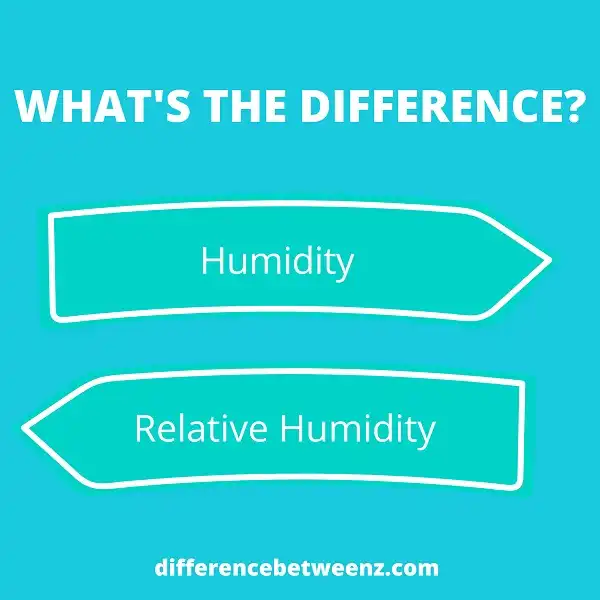Humidity and relative humidity are two terms that are often confused. Humidity is the amount of water vapor in the air, while relative humidity is a ratio of the current absolute humidity to the maximum possible absolute humidity at that temperature. In this blog post, we will discuss the difference between humidity and relative humidity, and how to accurately measure relative humidity. We will also explore some common applications of relative humidity measurements.
What is Humidity?
Humidity is a measure of the amount of water vapor present in the air. Water vapor is the gaseous form of water and is invisible. The higher the temperature, the more water vapor the air can hold. The relative humidity is a measure of how much moisture is in the air compared to how much moisture the air can hold at a particular temperature.
- If the relative humidity is 100%, the air is saturated with moisture and cannot hold anymore. If the relative humidity is 0%, the air is completely dry.
Most people are comfortable when the relative humidity is between 30% and 60%. - However, what is comfortable for one person may not be comfortable for another. The amount of moisture that someone perspires also depends on the person’s activity level, clothing, and body fat composition. The color of your skin also affects how much you sweat.
- People with darker skin tend to sweat more than people with lighter skin because darker skin absorbs more heat from sunlight. Age also plays a role in how much you sweat. As you get older, your sweat glands become less active. This means that you will sweat less as you age. But, no matter how old you are, if you exercise or are in a hot environment, you will sweat to cool your body down.
There are two types of Humidity, Absolute, and Relative:
– Absolute humidity is defined as the mass of water vapor divided by the volume occupied by a mixture of gas and vapor at a given pressure and temperature.
– Relative humidity (RH) is defined as the ratio of partial pressure of water vapor in a sample of air to that of saturated air at a given temperature and pressure.
What is Relative Humidity?
Relative humidity is a measure of the amount of water vapor in the air relative to the amount of water vapor that the air can hold at a given temperature. The warmer the air, the more water vapor it can hold. Relative humidity is expressed as a percentage of the maximum amount of water vapor that the air can hold at a particular temperature. For example, if the air temperature is 70 degrees Fahrenheit and the relative humidity is 30 percent, that means that the air contains 30 percent of the water vapor it could contain at that temperature.
Relative humidity is an important measure because it determines how comfortable people feel and how much evaporation occurs from surfaces such as skin and clothing. Relative humidity also affects transportation, manufacturing, and other industries. High relative humidity can also lead to condensation on surfaces, which can cause mold and mildew growth. Therefore, it is important to understand Relative Humidity and how it works in order to maintain a comfortable and healthy environment.
Difference between Humidity and Relative Humidity
The terms humidity and relative humidity are often used interchangeably, but there is a big difference between the two. Humidity is a measure of the water vapor content in the air, while relative humidity is a measure of the amount of water vapor in the air relative to the amount of water vapor that air can hold at a specific temperature. In other words, relative humidity takes into account both the temperature and the water vapor content of the air. When the air is warmer, it can hold more water vapor, so relative humidity will be lower. When the air is cooler, it can hold less water vapor, so relative humidity will be higher.
Conclusion
Humidity is the amount of water vapor in the air, while relative humidity takes into account how much moisture the air can hold at a given temperature. Both humidity and relative humidity are expressed as percentages. Knowing the difference between these two measurements is important for understanding weather conditions and predicting outdoor activities. For example, if you were going to go outside to run but it was recently very humid, you might want to wait until later when the humidity has decreased because your body will have a harder time cooling down in high levels of humidity.


